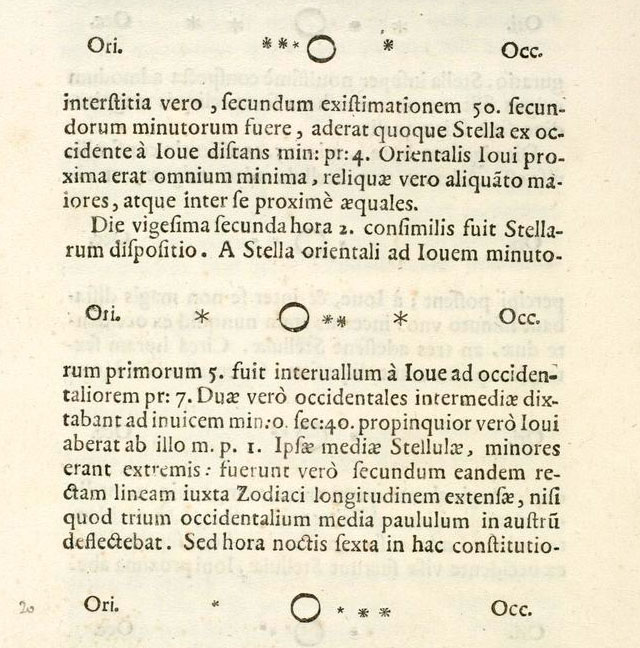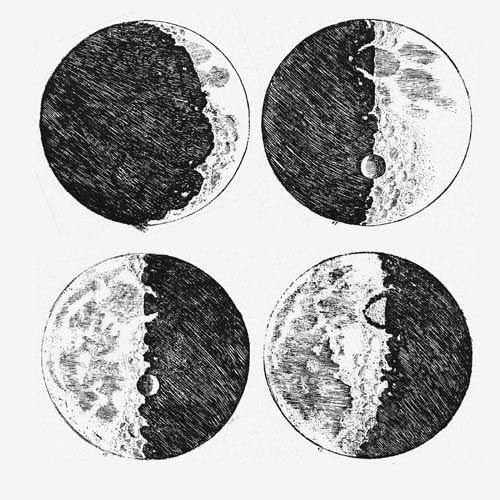kottke.org posts about galileo
If you believe in gravity, then you know that if you remove air resistance, a bowling ball and a feather will fall at the same rate. But seeing it actually happen, in the world’s largest vacuum chamber (122 feet high, 100 feet in diameter), is still a bit shocking.
In the late 1500s, Galileo was the first to show that the acceleration due to the Earth’s gravity was independent of mass with his experiment at the Leaning Tower of Pisa, but that pesky air resistance caused some problems. At the end of the Apollo 15 mission, astronaut David Scott dropped a hammer and a feather in the vacuum on the surface of the Moon:
Science!
In the pages of Sidereus Nuncius, Galileo described the four large moons of Jupiter in a series of 64 sketches which looked a lot like ASCII art in the text:

Using an online tool for computing the positions of Jupiter’s moons, Ernie Wright compared Galileo’s sketches to the moons’ actual motions.

Click through for an animated GIF of all the comparisons. Not bad for the telescopic state of the art in 1610. For a taste of how celestial objects actually appeared when viewed through Galileo’s telescope, check out this video starting around 7:30. (thx, john)

From an analysis of when and where these drawings were done.
An excerpt from one of Galileo Galilei’s letters to Don Virginio Cesarini:
Long experience has taught me this about the status of mankind with regard to matters requiring thought: the less people know and understand about them, the more positively they attempt to argue concerning them, while on the other hand to know and understand a multitude of things renders men cautious in passing judgment upon anything new.
Want more Galileo? The Istituto e Museo di Storia della Scienza in Florence is loaning out their exhibit, Galileo, the Medici and the Age of Astronomy to The Franklin in Philadelphia. It features one of the last two telescopes belonging to the astronomer, as well as his notes, paintings, and other instruments, including the cylindrical sundial and Michelangelo’s compass.








Stay Connected